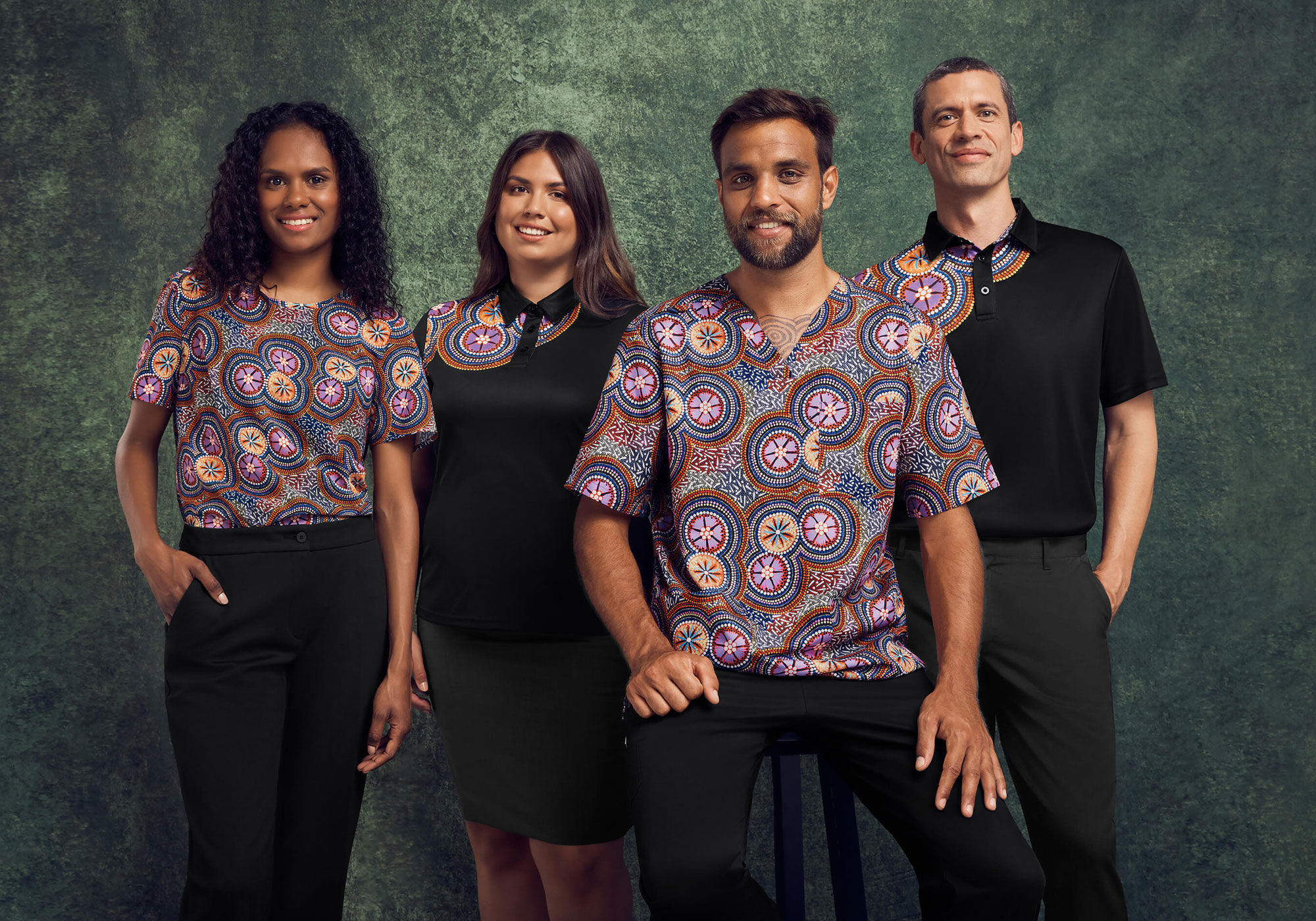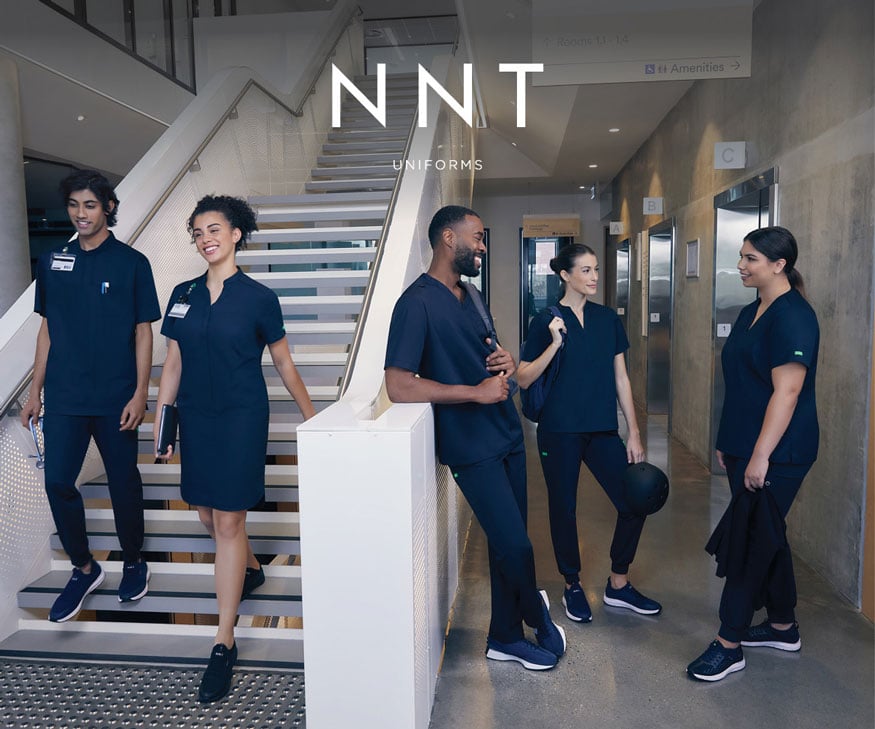At NNT, we’re proud to showcase the work of local Indigenous artists through dynamic partnerships that deliver standout designs.
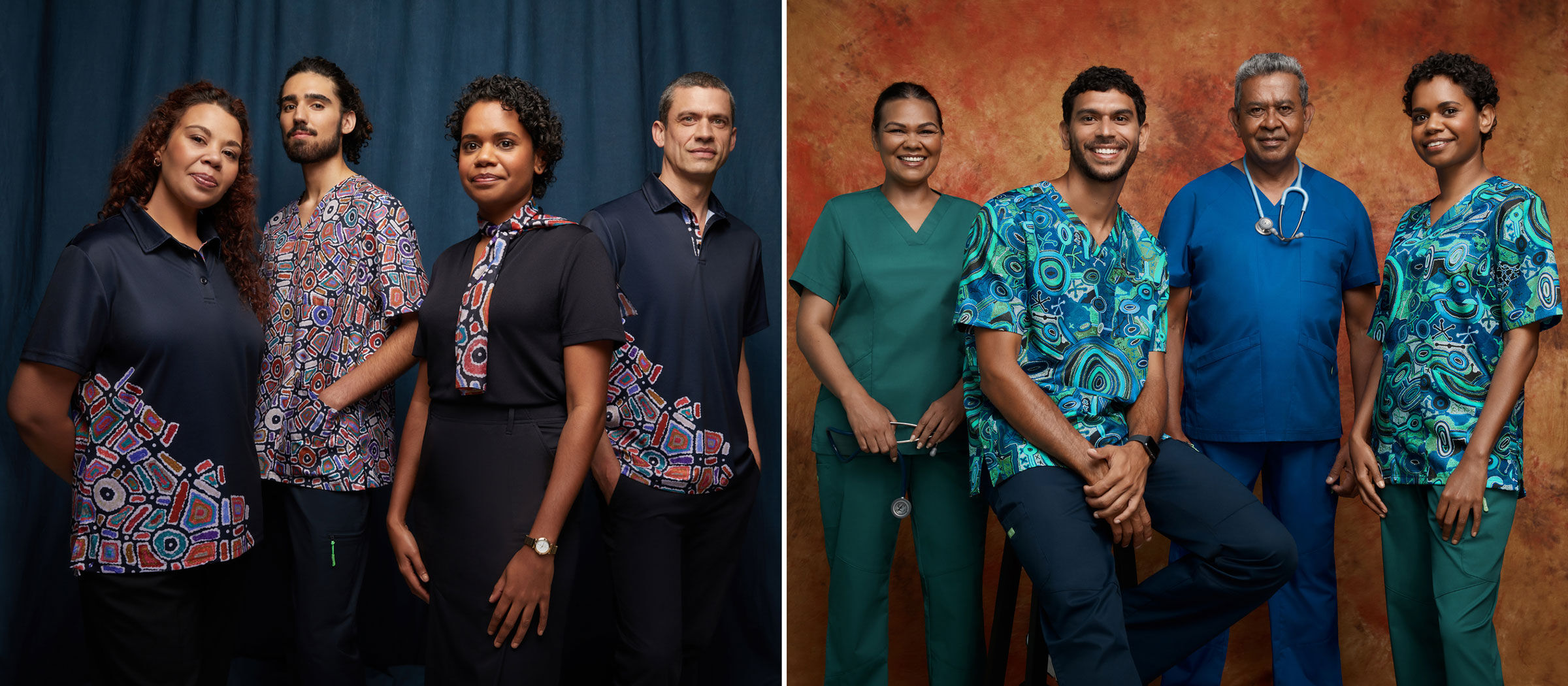
We work with Warlukurlangu Artists, a First Nations People owned art centre located in the Yuendumu community in remote central Australia, which promotes the maintenance of local Indigenous culture through First Nations People art. Artwork licensed from the Indigenous artists who paint there is turned into special, limited-edition prints that are used across a select range of NNT uniforms. A percentage of the proceeds from the sale of each garment goes directly to the artist and the community-owned centre, so they can continue their important work.
Discover our latest collaborations right here.
Glenda's Bush Tucker Jukurrpa (Bush Tucker Dreaming) print
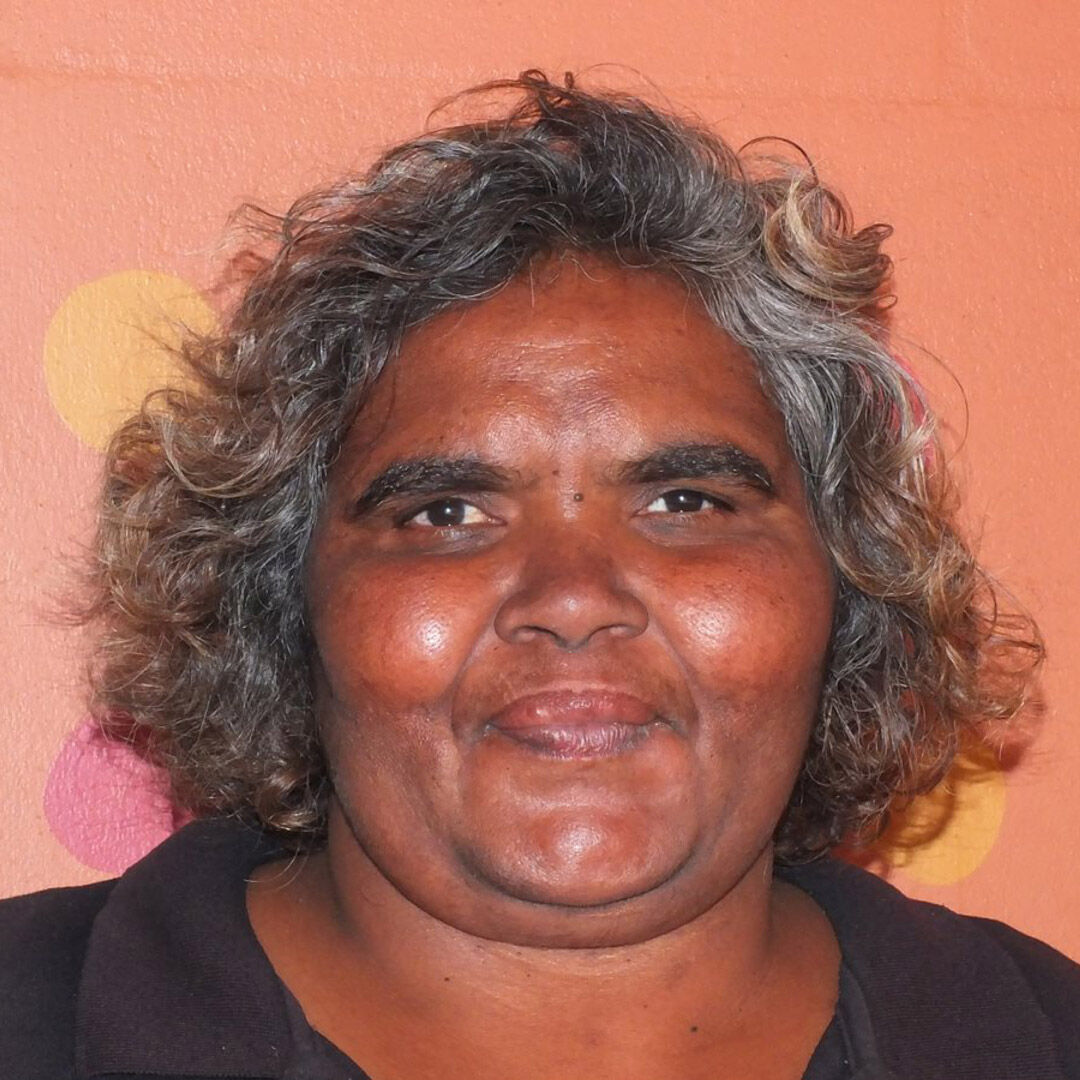
Celebrating the artist
Glenda Nangala Briscoe was born in 1971 in Alice Springs Hospital, the closest hospital to Yuendumu, a remote First Nations People community 290km north-west of Alice Springs in the NT of Australia. She went to the local primary school before completing her secondary school education in Alice Springs. Glenda has led an active life with family and friends and now has time to concentrate on painting.
She began painting in 2015, with Warlukurlangu Artists Aboriginal Corporation, a First Nations People owned and governed art centre located in Yuendumu. However, it wasn’t until 2020, when she retired, that she was able to commit herself to full-time painting. Glenda paints her Bush Tucker Jukurrpa (dreaming), passed down to her by her mother and all the mothers before them for millennia. Her paintings depict bush tucker, food collected by karnta (women) while out hunting. Many of the foods have their own Jukurrpa (dreaming) associated with them. To represent her mother and her grandmother’s country, Glenda creatively combines colour and patterns to blend traditional motifs with her own ideas of modern design.
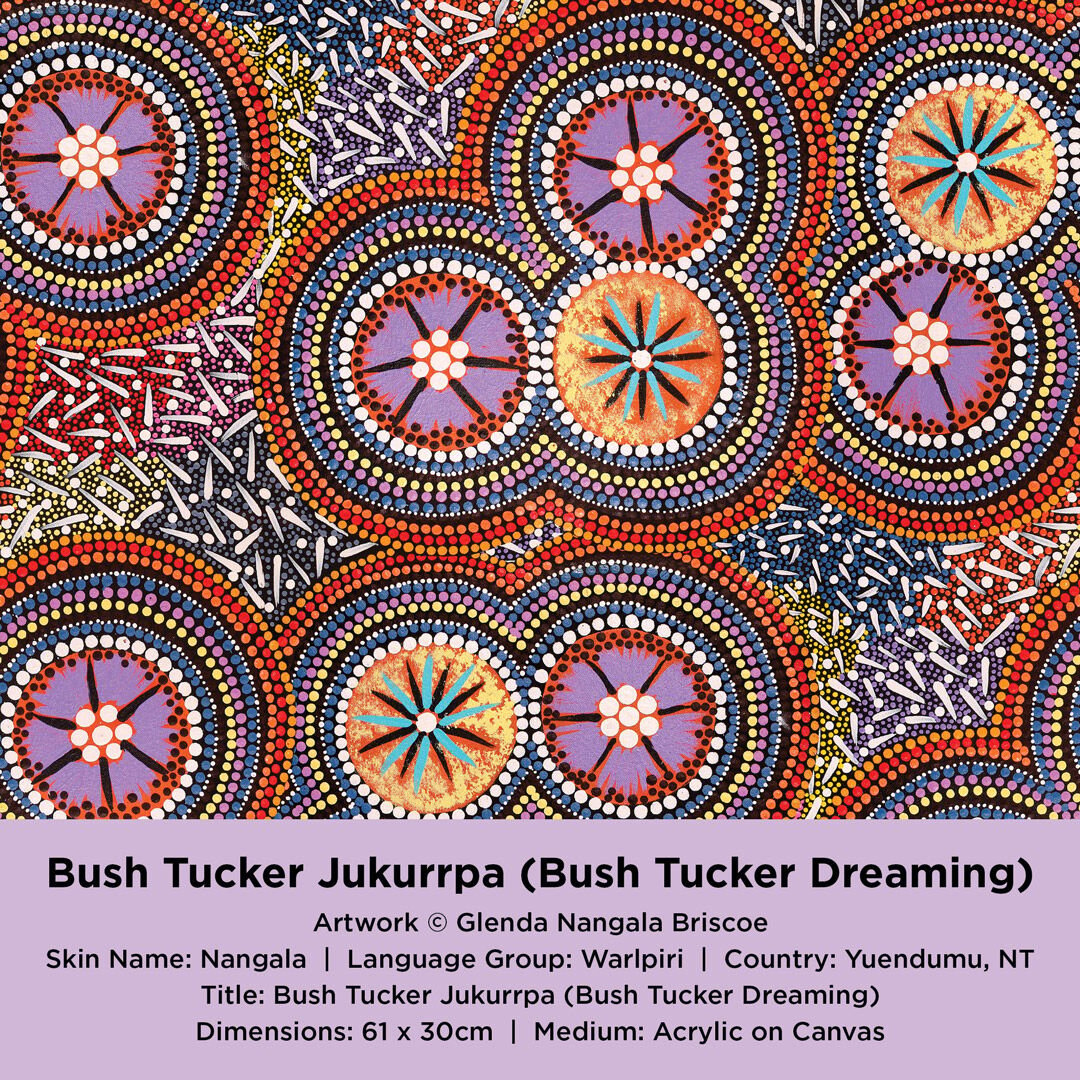
The story behind the artwork
This painting depicts bush tucker, food collected by karnta (women) while out hunting. There is a wide variety of traditional food that Warlpiri people continue to gather and consume as a part of their diet. Many of the foods have their own Jukurrpa (dreaming) associated with them. Some of the common bush tucker foods are ngarlkirdi (witchetty grub), wanakiji (bush tomato), yarla (bush potato), janmarda (bush onion), ngarlajiyi (bush carrot), lukarrara (fringe rush seed), and yuparli (bush banana).
Theo’s Pikilyi Jukurrpa (Vaughan Springs Dreaming) print
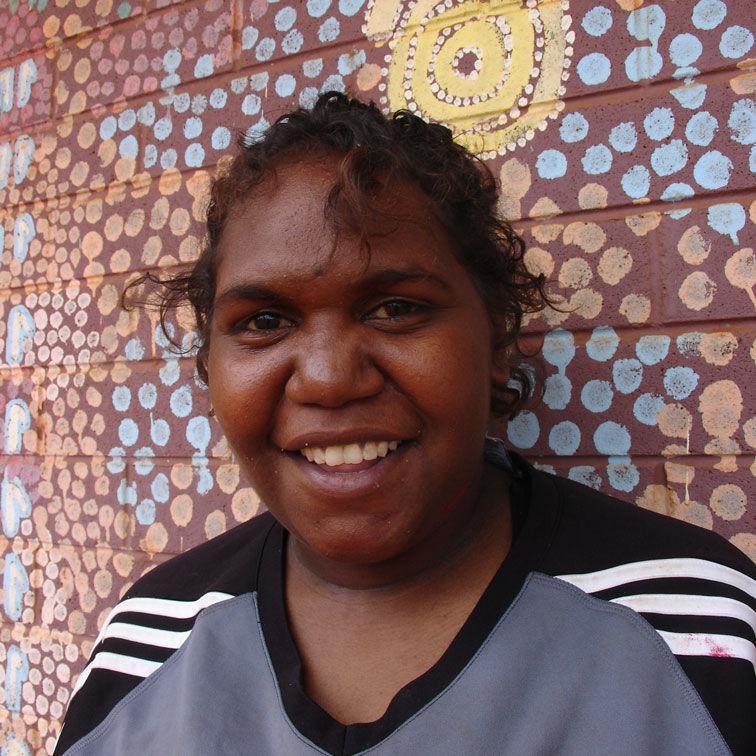
Celebrating the artist
Theo (Faye) Nangala Hudson was born in 1989 in Alice Springs Hospital, the closest hospital to Nyirripi, a remote First Nations People community located 440 km north-west of Alice Springs in the NT of Australia where her parents lived.
Theo began painting with the Warlukurlangu Aboriginal Corporation, a First Nations People owned and governed art centre located in Yuendumu in 2002, when she was 13 years of age. “I would watch my Grandmother paint and listen to her stories”. She began to paint in earnest with the art centre in 2006.
Warlukurlangu makes regular visits to Nyirripi to drop off canvas, paint and brushes for the artists and to collect finished artwork. Theo paints her mother’s Jukurrpa (Dreamings) and her father’s Jukurrpa, such as Yuparli Jukurrpa (Bush Banana Dreaming) from her mother’s side and Pikilyi Jukuurpa(Vaughan Springs Dreaming) from her father’s side. These Dreamings have been passed down through the millennia. Theo uses an unrestricted palette and loves to create patterns that depict a modern interpretation of her traditional culture.
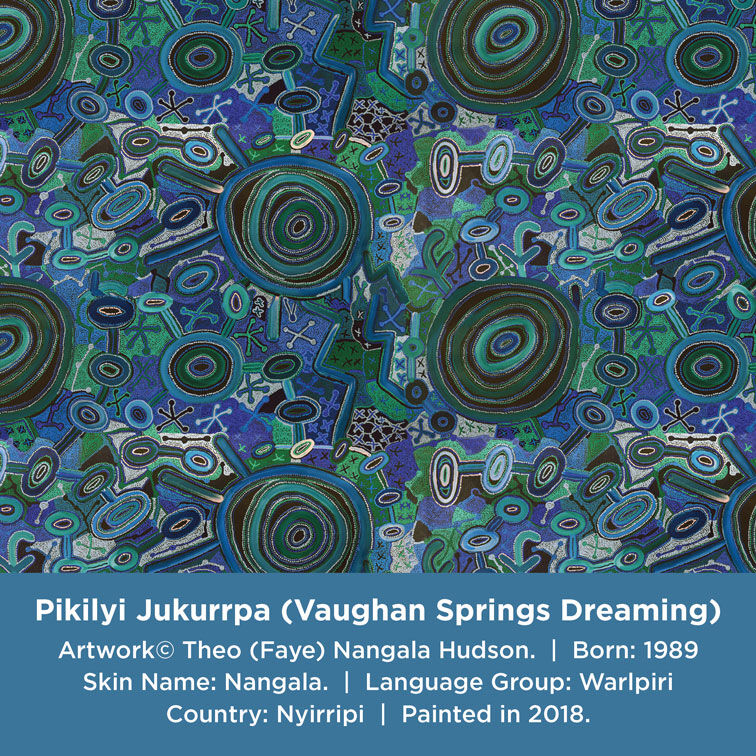
The story behind the artwork
Pikilyi is a large and important waterhole and natural spring near Mount Doreen station. Pikilyi Jukurrpa (Vaughan Springs Dreaming) tells of the home of two rainbow serpents, ancestral heroes who lived together as man and wife.
The woman ‘rainbow serpent’ was of the Napanangka skin group, the man was a Japangardi. This was a taboo relationship contrary to Warlpiri religious law. Women of the Napanangka and Napangardi subsection sat by the two serpents, picking lice off them.
For this service, the two serpents allowed the women to take water from the springs at Pikilyi. This was because the serpents were the ‘kirda’, or ceremonial owners, for that country. The spirits of these two rainbow serpents are still at Pikilyi today. This Dreamings belongs to the women and men of the Japanangka/Napanangka and Japangardi/Napangardi skin groups.
Lynette’s Ngapa Jukurrpa (Water Dreaming) print
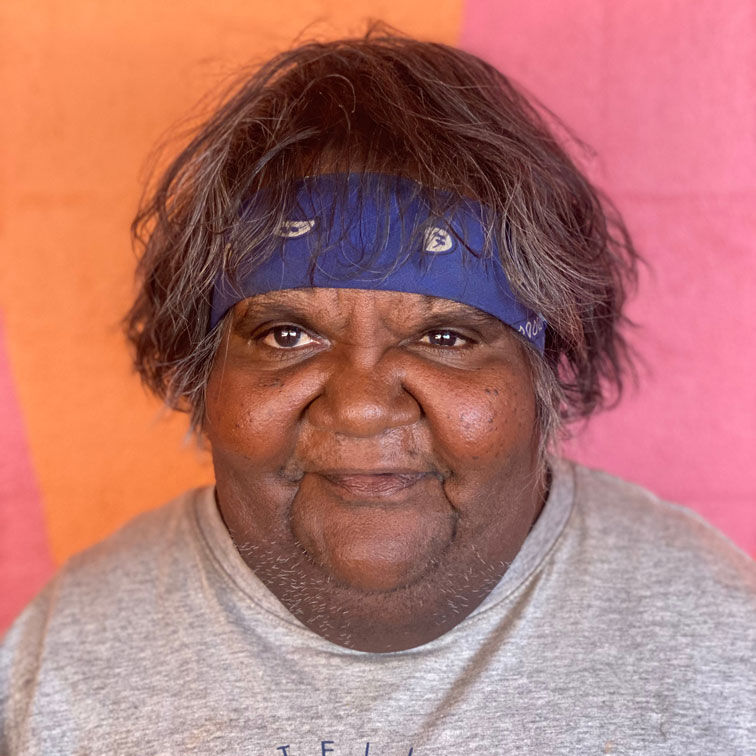
Celebrating the artist
Lynette Nangala Singleton was born in 1970 in Alice Springs Hospital, the closest hospital to Yuendumu, a remote First Nations People community 290 km north-west of Alice Springs in the NT of Australia. She grew up in Yuendumu, attended the local school after which she completed her schooling at Yarara College, a First Nations People boarding school in Alice Springs. When she finished school she returned to Yuendumu. She is married and although she has no children she has many nieces.
She now lives in Nyirripi, a First Nations People community 160 km north-west of Yuendumu. Lynette has been painting with Warlukurlangu Artists Aboriginal Corporation, a First Nations People owned and governed art centre located in Yuendumu, since 2008. She paints her Father's Jukurrpa stories, Dreamings which relate directly to her land, in particular a rock hole west of Lake Mackay. These stories have been passed down by her father and her father's father for millennia. When Lynette is not painting she enjoys hunting for goanna.
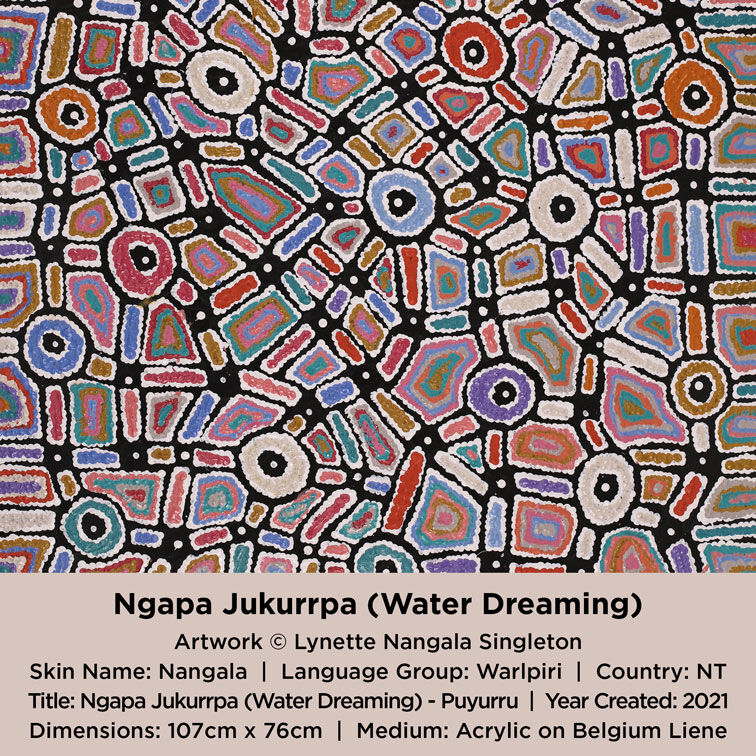
The story behind the artwork
The site depicted in this painting is Puyurru, west of Yuendumu. In the usually dry creek beds are 'mulju'm (soakages), or naturally occurring wells. The 'kirda' (owners) for this site are Nangala/ Nampijinpa women and Jangala/Jampijinpa men.
Two Jangala men, rainmakers, sang the rain, unleashing a giant storm. The storm travelled across the country from the east to the west, initially travelling with a 'pamapardu Jukurrpa' (termite Dreaming) from Warntungurru to Warlura, a waterhole 8 miles east of Yuendumu.
At Warlura, a gecko called Yumariyumari blew the storm on to Lapurrukurra and Wilpiri. Bolts of lightning shot out at Wirnpa (also called Mardinymardinypa) and at Kanaralji. At this point the Dreaming track also includes the 'kurdukurdu mangkurdu Jukurrpa' (children of the clouds Dreaming). The water Dreaming built hills at Ngamangama using baby clouds and also stuck long pointy clouds into the ground at Jukajuka, where they can still be seen today as rock formations.
